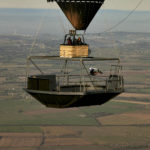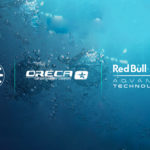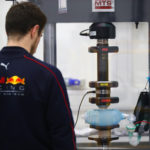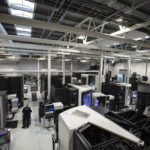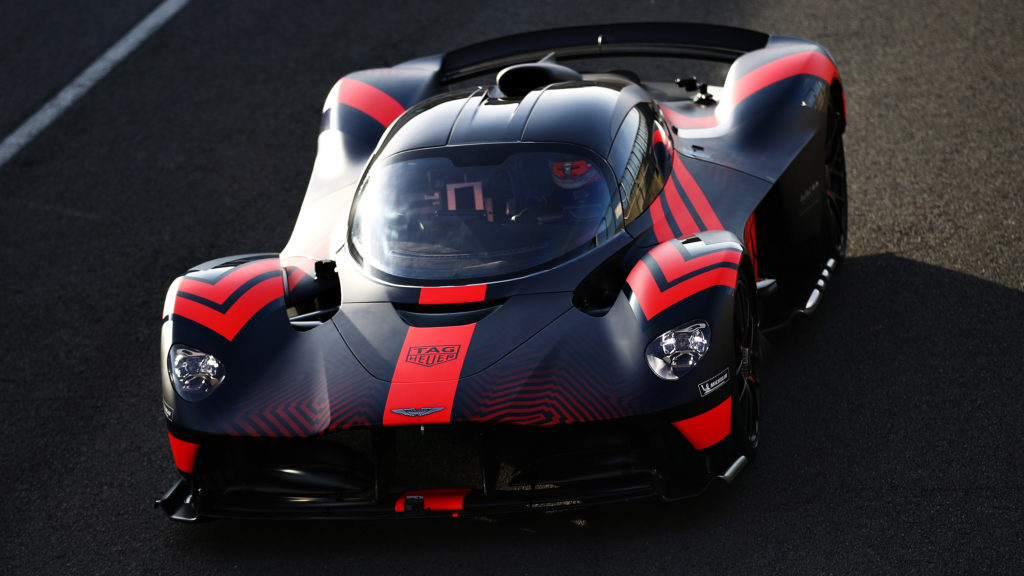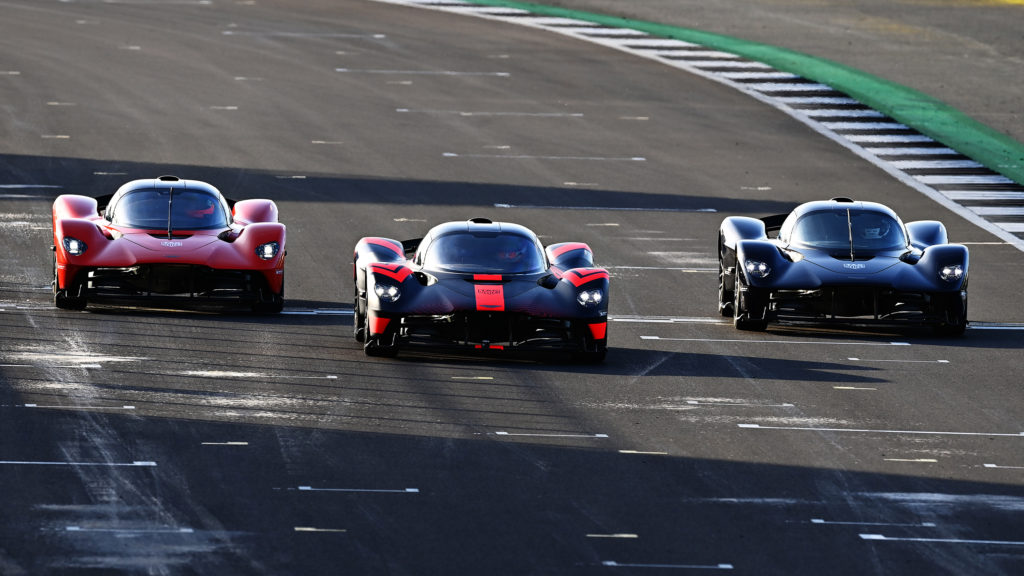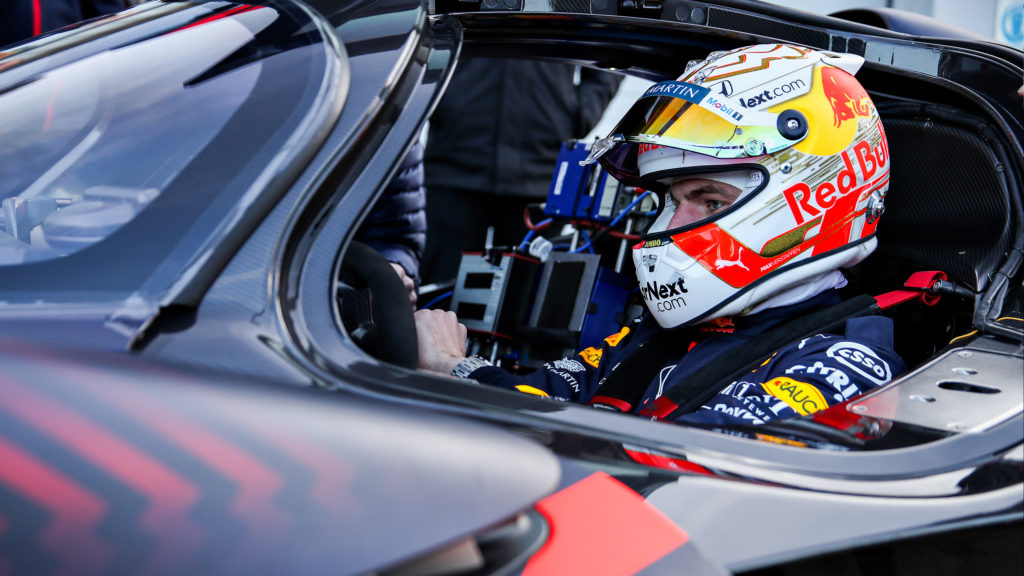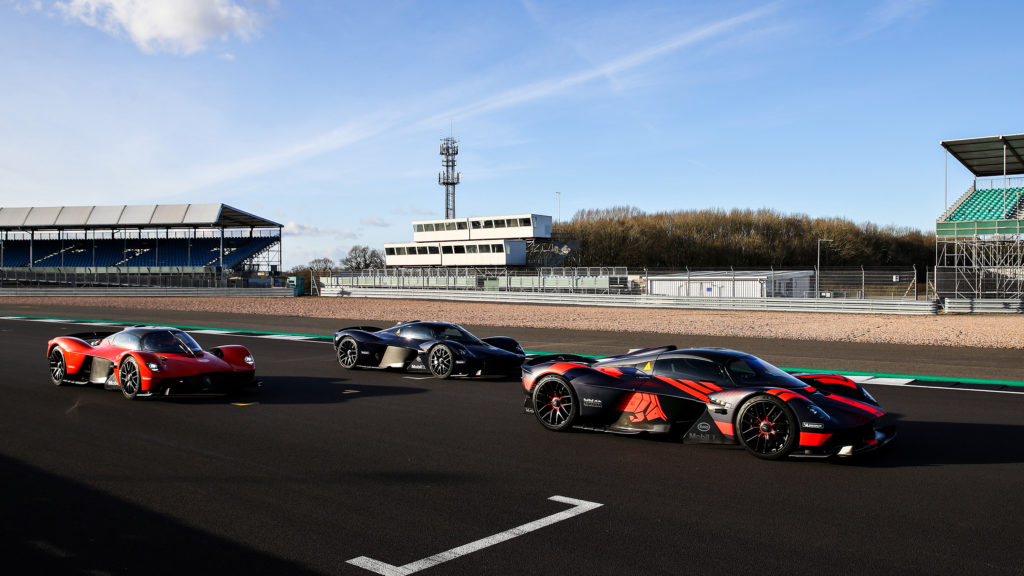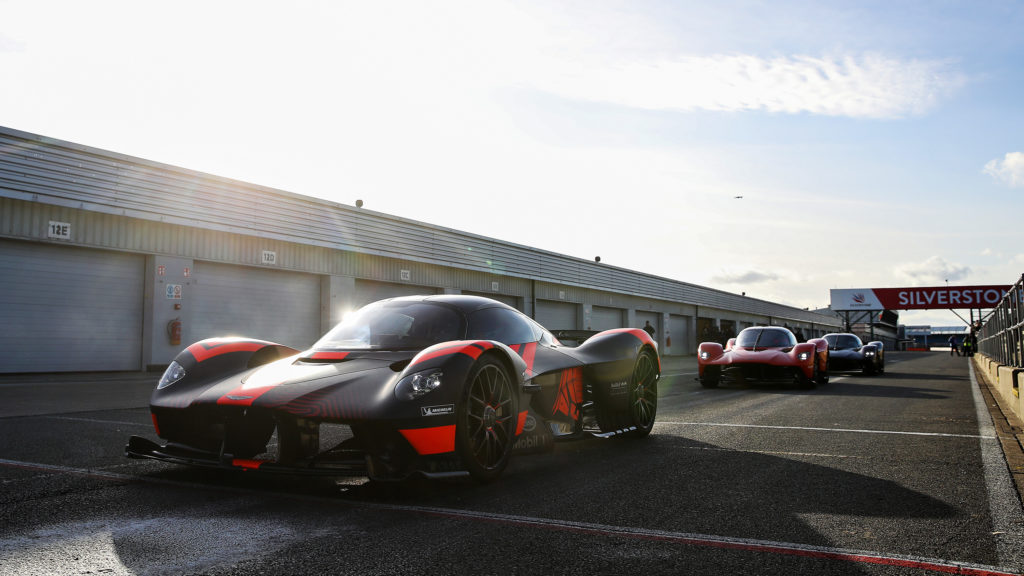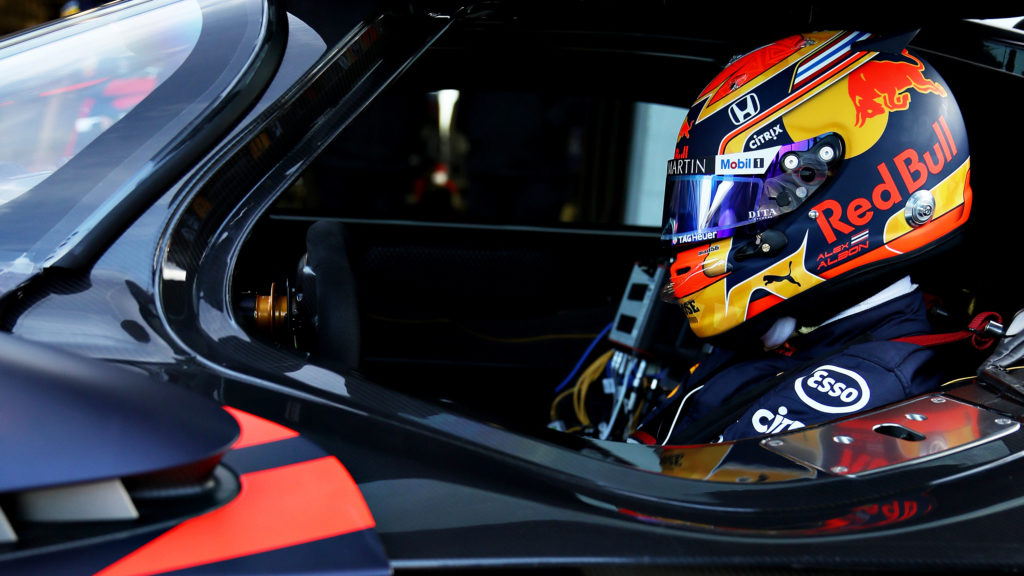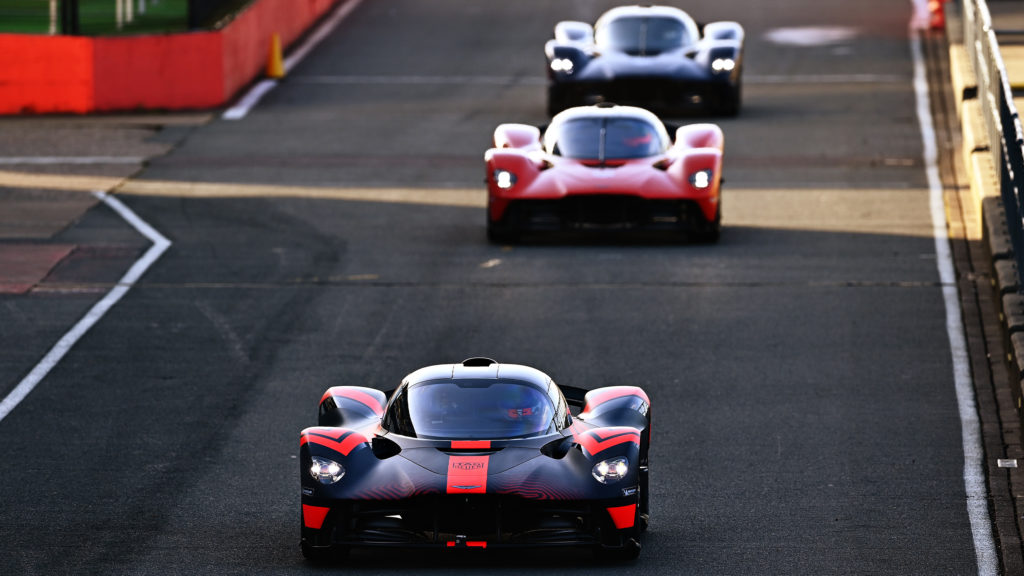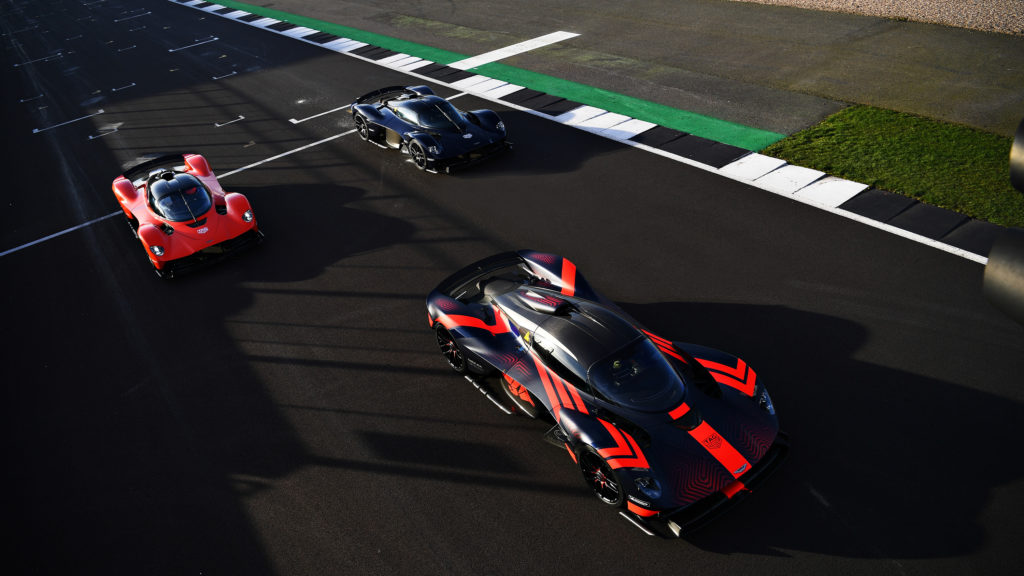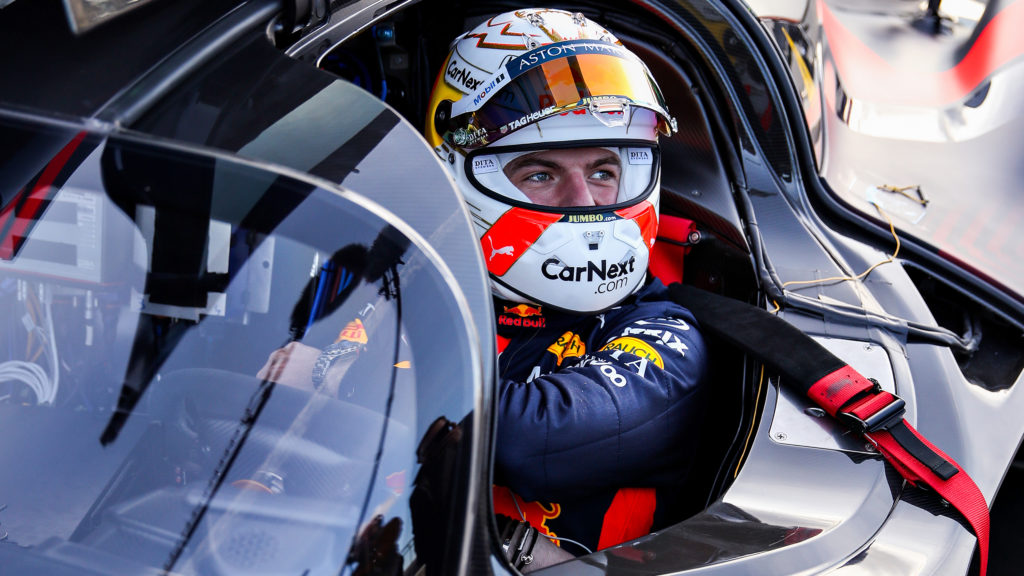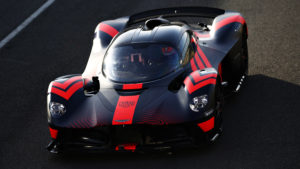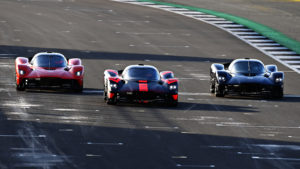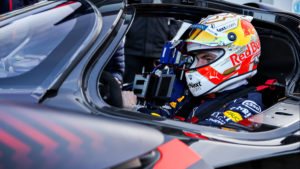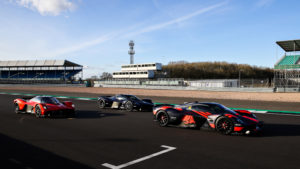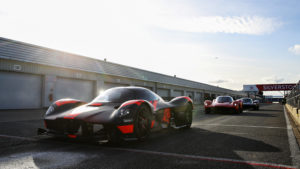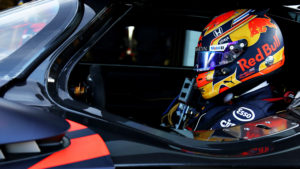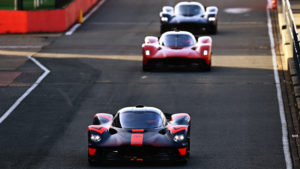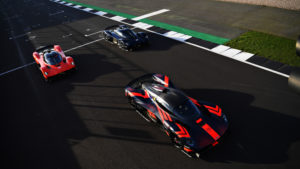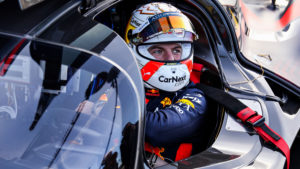Formula 1
The World’s First Floating Skatepark At Over 2,000ft In The Sky
April 13, 2023
Scottish BMX Pro, Kriss Kyle, quite literally takes his sport to new heights by performing tricks above the ground from one of the world’s largest hot air balloons
Limits do not exist for BMX rider and Red Bull athlete Kriss Kyle who has achieved something seemingly impossible. With a skatepark suspended from one of the world’s largest hot-air balloons, Kriss Kyle floats over 2,000 feet above ground, showcasing an array of tricks suspended in mid-air for his latest pioneering BMX film.
Kriss braves his fear of heights to ride against the clock, contending with the Formula One engineered BMX bowl swinging underneath him. In a masterpiece of precision, Kriss uses his unique riding style, quick thinking and years of experience to manoeuvre the compact space, with no room for error. Onlookers stood with jaws dropped at the spectacle of the world’s first floating skatepark, as Kriss performed a range of tricks, fighting against a heavily weighted parachute, and the bowl moving and bouncing like never before.
The engineering feat saw Kriss work with Red Bull Advanced Technologies, the technological arm of the Oracle Red Bull Racing Formula One Team to design and develop the one of a kind carbon fiber BMX bowl. Made from the same composite as a Formula One car, he utilised their world leading aerodynamics, simulation and modelling expertise. This was combined with the record breaking capabilities of Cameron Balloons, to design and create one of the world’s largest operating hot-air balloons alongside a group of Kriss’ close friends who have been riding BMX and building ramps together since they were kids, bringing together an unlikely and multi faceted project team capable of allowing Kriss to fulfil his vision of riding his bike in the sky.
It wasn’t just aeronautical engineering challenges which made this project difficult to get off the ground – very specific climatic conditions are needed to get a balloon six times larger than a standard hot air balloon and capable of carrying a 1.7-ton bmx bowl in the sky. A rare combination of high atmospheric pressure, cold and dry conditions, along with surface wind speeds of less than 3 mph were needed. It took nearly three years of planning, waiting and weather-watching for Kriss to finally realise his ambitions of riding his BMX at over 2,000ft.
Watch his latest pioneering BMX film below with a full behind the scenes documentary available to watch at redbull.co.uk/dontlookdown.
Red Bull Advanced Technologies Takes To The Seas With Alinghi Red Bull Racing
January 31, 2022
Red Bull Advanced Technologies, the high-performance vehicle engineering division of Red Bull Racing, will support the newly formed Alinghi Red Bull Racing America’s Cup team with its engineering and design expertise derived from competing in Formula 1, the world’s fastest development cycle.
Red Bull announced a new partnership with double America’s Cup winners Alinghi in December last year to form Alinghi Red Bull Racing and challenge for sailing’s biggest prize by taking Formula 1 know-how and expertise from the circuit to the sea.
Located at the Red Bull Technology
Campus in Milton Keynes, UK, engineers and designers at Red Bull Advanced
Technologies will work together with Switzerland-based Alinghi Red Bull Racing
on specific areas where it’s believed F1 technology can add performance to the
AC75 Racing Yacht. In particular aerodynamics, simulation, composites and
systems design appear to have many parallels between the two sports and thus
offer opportunities to extract every ounce of performance possible from the
yacht.
Rob Gray, Technical Director, Red
Bull Advanced Technologies, commented: “We are delighted to work
together with Alinghi and their talented group of engineers to help develop the
AC75 Racing Yacht by taking inspiration from the same tools, techniques and
methods used in Formula 1 and applying these to the biggest competition in
international sailing. This new adventure will see the two worlds of
high-performance marine and Formula 1 engineering come together and with
Alinghi, we’re hugely excited to see what we can collectively achieve as a
result.”
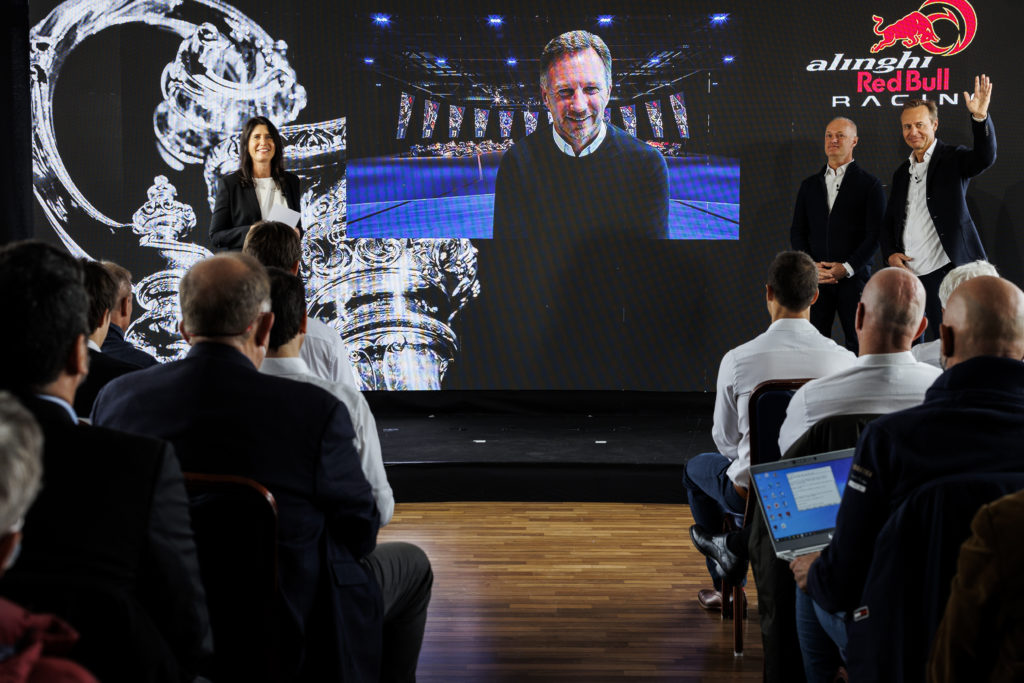
Silvio Arrivabene, Co-General Manager
of Design and Construction, Alinghi Red Bull Racing, added: “Traditionally
a design competition arguably even more than a sporting one, the America’s Cup
has in recent times looked at the F1 teams as the expression of the level to
aspire to. To now have the opportunity to strengthen our design process with
specialties brought in from the F1 winning experience is a treat and a
privilege. The team values and spirit we naturally share with the Red Bull
family have created an exciting working environment that we look forward to
exploiting together with Red Bull Advanced Technologies.”
In conjunction with the America’s Cup, Alinghi Red Bull Racing will also field teams in the debut of the Women’s America’s Cup Regatta, as well as in the return of the Youth America’s Cup. Follow the link to visit their website:
Alinghi Red Bull RacingBuilding The Sustainable Future Of Endurance Racing
January 25, 2021
Red Bull Advanced Technologies to design concept Hydrogen Class chassis for Le Mans 2024 in partnership with ORECA.
Following confirmation from the Automobile Club de l’Ouest, Red Bull Advanced Technologies is pleased to announce that it is to collaborate on the design of the chassis concept for the next generation of hydrogen-fuelled cars planned for the 2024 edition of the 24 Hours of Le Mans, the world’s most famous endurance race.
The new chassis will be designed in partnership with French racing team and car constructor ORECA, a long-established force in the world of endurance racing.
The collaborative winning bid will see the French company draw on its design and production skills as well as its endurance racing knowledge and experience. In parallel, Red Bull Advanced Technologies, the high-tech external solution division of Red Bull Technology, will bring its Formula 1 expertise in aerodynamics, vehicle dynamics, simulation technology and energy recovery optimisation to a project firmly focused on the sustainable future of endurance racing.
The initial task for the partners will be to undertake and provide a detailed feasibility study for the vehicle concept. As part of that initial phase of development, Red Bull Advanced Technologies and ORECA will be joined by Plastic Omnium, exclusive supplier of the hydrogen fuel tanks set for use in the racing prototypes that will take to some of the world’s most famous tracks in 2024.

Red Bull Advanced Technologies CEO Christian Horner said: “I am delighted that Red Bull Advanced Technologies have been chosen by the ACO along with our partners ORECA to develop the concept of a hydrogen powered endurance racing car for Le Mans. Red Bull Advanced Technologies are well equipped to take on the challenge set by the ACO having access to many of the tools used to design and develop the Red Bull Racing F1 car, along with significant experience on other cutting edge vehicle programs. The Hydrogen Class at Le Mans offers an exciting glimpse into the future of sustainable motorsport and promises both to advance the use of hydrogen in transportation, and also deliver exciting racing.”
Hugues de Chaunac, président du Groupe ORECA added: “We are proud that the Automobile Club de l’Ouest has chosen us to work alongside Red Bull Advanced Technologies on this ambitious, forward-looking project. And we are excited to be working with the other project partners, among them Plastic Omnium and Green GT. Collaboration is vital if we are to succeed in introducing a hydrogen class at the 2024 24 Hours of Le Mans. ORECA enjoys challenges and pioneering change and we can fully express our talents in such an engrossing enterprise. With the LMH and LMDh classes, endurance racing is entering a fascinating new era. From a technical and sporting point of view it will have us on the edge of our seats.”
Commenting on the success of the bid by Red Bull Advanced Technologies and ORECA, Pierre Fillon, president of the Automobile Club de l’Ouest said: “This exciting announcement confirms the appeal of Mission H24 and offers a promising future for zero-carbon motor racing and hydrogen prototypes. Thanks to ORECA, a mainstay of the 24 Hours of Le Mans for many years, and Red Bull Advanced Technologies, a successful motorsport business, the ACO will benefit from extensive endurance racing experience combined with cutting-edge technology to guarantee outstanding performance in its hydrogen class at the 24 Hours of Le Mans in 2024. This partnership confirms that the ACO has made the right decisions for the future of motorsport and underscores our ambition for zero-carbon racing for future generations. We’re delighted to welcome ORECA and Red Bull Advanced Technologies alongside Plastic Omnium, producer of the hydrogen class fuel tank. Having these top-flight automotive firms on board is likely to draw even more interest from car manufacturers, especially those who regularly contribute to our hydrogen working group. We are living in difficult times but the ACO is resolutely pursuing its route towards zero-carbon racing and mobility.”
ACO H2 Le MansGearing Up For The Re-start
June 4, 2020
On Monday, for the first time in 66 days, our Milton Keynes factory opened its doors for F1 work as we begin preparations for a hugely anticipated start of the 2020 Formula One Championship.
The factory shutdown, which forbids any Formula One related activity, was brought forward from its usual August timeframe to March in order to cope with the lockdown resulting from the COVID-19 global health pandemic. However, a little over nine weeks later, we’re gearing up to go racing again, and while we’ve had to implement a range of new procedures to keep everyone safe, the factory is once again a hive of industry, and from design to composites, fabrication to the race bays, work is once again focused on making the RB16 as competitive as possible.
But, while the shutdown meant we couldn’t engage in F1-related activity, it doesn’t mean the factory has been entirely silent over the past two months. As the COVID-19 pandemic worsened, we turned our engineering skill towards a race of a different kind – the one to try and help save lives. Though, in the end, the evolving nature of the crisis and better understanding of the treatment required meant a halt was called to our work, we’re still enormously proud of how we and our partners in the Project Pitlane alliance were able to develop a spark of genius from one junior doctor into an innovative new ventilator device for the NHS in record time.
The brainchild of Dr Alastair Darwood, a member of the NHS England Clinical Entrepreneur Programme, and remarkably, still a Junior Doctor, the BlueSky ventilator is a simple positive pressure ventilator designed for short-term emergency ventilation in trauma and critical care. The UK government identified the ventilator as potentially important in the fight against COVID-19 as it was easily scaleable and had the potential to be mass produced with relative ease, compared to the more complex ventilators already used in critical care settings.
However, despite the cleverness of Dr Darwood’s invention, it was still just a concept and to get the ventilator from concept to production would, in normal circumstances, take a considerable amount of time – a commodity in short supply in a pandemic situation. To change that, Professor Tony Young OBE, Director of Medical Innovation at ARU put Dr Darwood in touch with Innovate UK and in turn with the UK’s F1 teams.
And if there’s one thing F1 teams excel at it’s lightning-quick development and within just two days of the first meeting to analyse the BlueSky ventilator concept at our Milton Keynes factory on 22 March, the first prototype was ready for extensive rig testing leading to the pre-production prototype and ultimate MHRA sign-off.
Our designers and engineers, alongside colleagues at Renault led the charge with mechanical design, manufacturing, electronics and control systems. The Team and Haas also collaborated on mechatronics and mechanical interface, with the other UK teams each playing their part. The Project Pitlane collaboration pooled their extensive network of suppliers within motorsport and the automotive industry including Nissan.
Along with the design task the factories were also re-purposed for mass manufacture of medical grade equipment. Race car assembly bays and composite clean rooms were rapidly re-purposed under the scrutiny of the medical manufacture regulators.
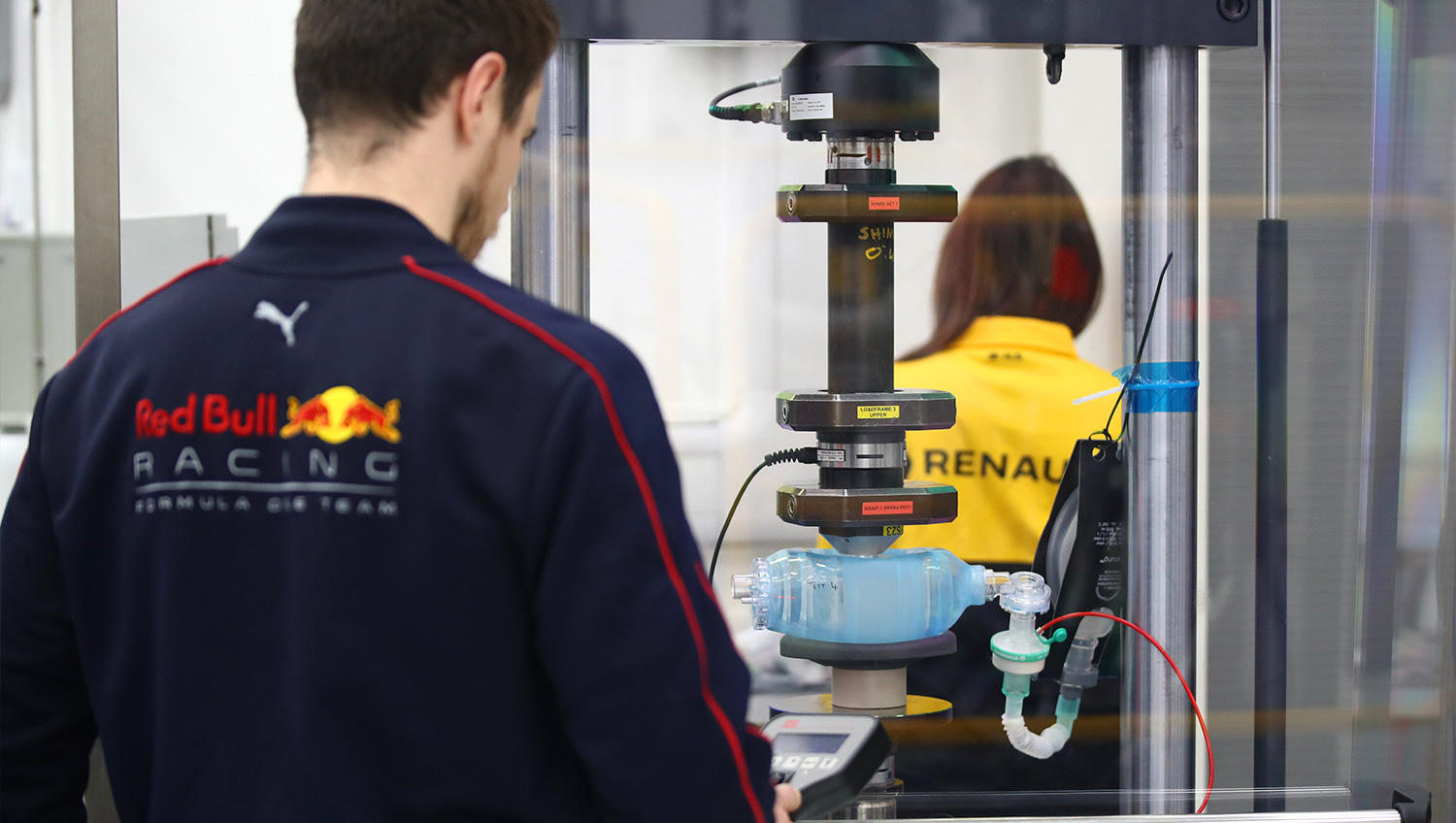
The design and execution of the initial prototype was so impressive that an initial order of units was placed by the UK Government with manufacturing capability being scaled up to provide for 30,000 units if required.
However, as the crisis evolved and the NHS better understood the virus it became clear that enough capacity would exist within the NHS with the existing equipment and the BlueSky project was halted.
Despite the brakes being put on the BlueSky ventilator just days before mass production began, all those involved in the project are hugely proud of the speed at which a clever design became reality thanks to F1’s incredible ability to innovate.
“This project has been an incredible experience and a phenomenal collaboration between many different teams,” said Dr Darwood of BlueSky’s development. “A group of F1 engineers took my initial design and rapidly produced a pre-production prototype capable of mass manufacture and adherence to the rigorous demands of a COVID-19 ventilator. I am deeply honoured to be a part of this process and humbled by the dedication and commitment shown by every member of our team. I’ve seen the engineering skill behind the F1 cars first-hand now; a huge amount of engineering prowess goes into every single element of the car, and their fundamental design skills and problem-solving ability is exceptional.”
And now with, we hope, the worst of the crisis behind us, that engineering prowess can once more be turned towards what we love and do best – building racing cars, making them quick and then quicker again and in the process hopefully bringing back even more silverware to our newly re-opened, race-ready Milton Keynes home.
Project Pitlane
Formula 1 Statement: Project Pitlane
March 27, 2020
Project Pitlane – Seven UK-based Formula 1 teams making significant progress towards UK Government’s call for assistance with the manufacture of medical devices to help in the treatment of COVID-19 patients.
As confirmed today by The UK Government, during the past two weeks a collective of seven UK-based Formula 1 teams,* their respective technology arms and Formula 1 has made significant progress in defining and coordinating its response to the UK Government’s call for assistance with the manufacture of medical devices to help in the treatment of COVID-19 patients.
The seven teams’ combined efforts, termed ‘Project Pitlane’, are part of a UK industry-wide effort to manufacture and deliver respiratory devices to support the national need.
Following decisions taken this week by the UK Government, Project Pitlane is focussed on three workstreams. These workstreams vary in scope from reverse engineering existing medical devices, to support in scaling the production of existing ventilator designs as part of the VentilatorChallengeUK consortium, to the rapid design and prototype manufacture of a new device for certification and subsequent production.
In each instance, Project Pitlane will pool the resources and capabilities of its member teams to greatest effect, focusing on the core skills of the F1 industry: rapid design, prototype manufacture, test and skilled assembly. F1’s unique ability to rapidly respond to engineering and technological challenges allows the group to add value to the wider engineering industry’s response.
The focus of Project Pitlane will now be on coordinating and answering the clear challenges that have been set. The seven teams remain ready to support in other areas requiring rapid, innovative technology responses to the unique challenges posed by the COVID-19 pandemic.
* Aston Martin Red Bull Racing, BWT Racing Point F1 Team, Haas F1 Team, McLaren F1 Team, Mercedes-AMG Petronas F1 Team, Renault DP World F1 Team, ROKiT Williams Racing
Project PitlaneMax and Alex Drive The Valkyrie
February 18, 2020
Max Verstappen and Alex Albon got their first taste of the Aston Martin Valkyrie as the Formula One drivers got behind the wheel of the revolutionary hypercar at Silverstone Circuit.
The brainchild of Aston Martin Red Bull Racing Chief Technical Officer Adrian Newey and designed in collaboration with Aston Martin’s Chief Creative Officer Marek Reichman, the 6.5-litre naturally-aspirated V12 Valkyrie aims to bring Formula 1 levels of performance to the road and track.
And with development of the Valkyrie now entering its final phase, Max and Alex were given the opportunity to get behind the wheel of the game-changing hypercar.
As Aston Martin tested a trio of prototypes at the home of the Formula 1 British Grand Prix, Silverstone.
Both Max and Alex opted to test the VP1 prototype in its striking Signature Pack Red Bull-inspired livery, first seen on the Aston Martin Red Bull Racing RB15 and featured on the Valkyrie at its first track test at Silverstone in July 2019.
And Max came away impressed by the Valkyrie’s performance, saying: “I was here at Silverstone to watch the first runs of the Valkyrie at the British Grand Prix last year but of course it’s always better to be behind the wheel yourself.
“To be one of the first guys to drive an insane car like this was really exciting. It was amazing to get a first taste of it,” said Max.
“Of course it’s still in the development phase but you can already feel the pace, which compared to a normal car is… pretty different!” he added.
“The Valkyrie and its levels of downforce are incredible, and it looks super aggressive. It was a lot of fun out there.”
For Alex, today’s Silverstone outing was a first opportunity to see the hypercar in the flesh, and he wasn’t disappointed.
“It was incredibly exciting to have this opportunity and the first thing that struck was the visual aspect – it looks awesome! It also really feels like a racing car,” said the Thai driver.
“Max had a go before me, so the anticipation was building, and to get a chance to drive it was really special and it feels really good.
“Obviously there’s still some development to do, but already it feels very good, especially the balance between the corners. It’s light; it feels sharp.
“Sure, compared to an F1 car, you’re missing the outright downforce, but you still feel the G forces in the corners and it definitely reacts closer to an F1 car than a normal road car.
“It’s pretty special. I just need to get my hands on one!”
The VP1 wasn’t the only Valkyrie on track as the VP2 and VP3 models also took to the circuit at the hands of Aston Martin test drivers Chris Goodwin, Darren Turner and Alex Lynn.
Looking back on the day Alex shared his thoughts on the Valkryie, representing a major achievement for both Red Bull Advanced Technologies and Aston Martin.
“It’s a big achievement for Red Bull Advanced Technologies. Aston Martin have been very welcoming to the idea of a Formula One team working with a car manufacturer, and with Adrian’s help it’s very exciting to take the technology we have at the race track and bring it to the road.”
Aston Martin Valkyrie